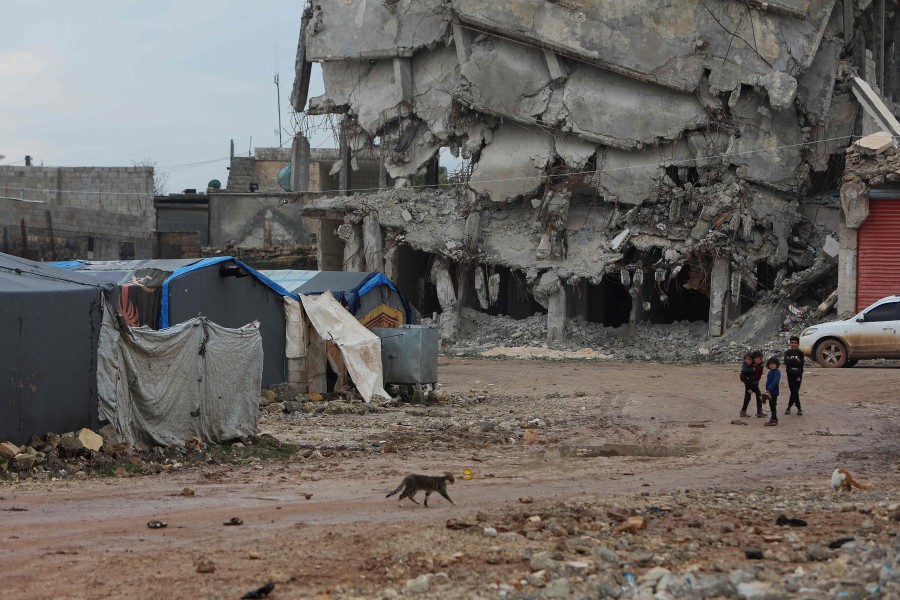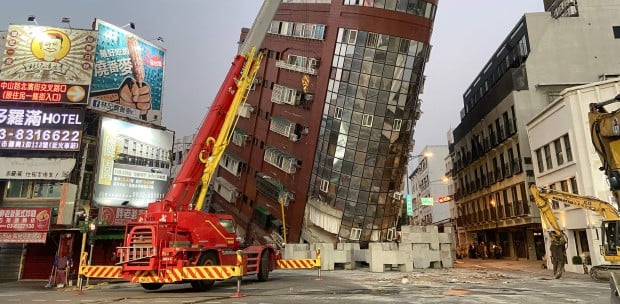KAHRAMANMARAS, Turkiye: Abdullah Yanar planted flowers in front of his container home to make it feel more like a real home for his family, who have been living in temporary shelters in southern Turkiye since last year's devastating earthquake.
The 7.8-magnitude quake that struck last February, modern Turkiye's deadliest, killed several of Yanar's relatives and damaged his apartment, forcing him and his wife, daughter and son to move first into a tent and then to one container home after another.
Yanar, who is 38 and works for the local authority, says that despite some rebuilding it will take a very long time to restore the historic provincial capital of Antakya.
Faced with unaffordable rents on "real homes", and unpredictable water and electricity supply in his 21 square-metre container house, he is not hopeful about his family's future.
"I have no hopes from this point onwards. I don't have any expectations," he said.
The quake that struck in the early hours of Feb 6 levelled towns and parts of some cities in the country's southeast. It killed more than 53,000 people in the country and nearly 6,000 in neighbouring Syria, and left millions homeless.
A year on, those who survived and remain in Hatay province still live with the impact.
Much of the province collapsed in the quake but hundreds of destroyed buildings have yet to be demolished, and many of the two-thirds of Hatay's residents who stayed in the province now live in container homes.
In October, Yanar's family moved into yet another container home, which has a small living room with an open kitchen, one bedroom and a bathroom. He says a four-fold jump in rents in the area means there is no option to move out.
In the same container city, Ali Riza and Sunay Gazaloglu sit on a sofa with their daughter, Ela, between them. The 9-year-old was the only one of their three daughters to survive when their home collapsed a year ago.
Ela plays with a red teddy bear without saying a word. She is afraid of entering buildings and does not go to her four-storey school.
"We were a happy family before the earthquake. I had a job and insurance," said Ali Riza, who suffered serious injuries to his back when the quake struck.
For now, his family covers daily expenses with funding provided to victims by the Turkish Red Crescent.
In the wake of the disaster, President Recep Tayyip Erdogan's government promised to rebuild 680,000 homes across 11 provinces over two years, including some 250,000 in Hatay. Officials unveiled the latest homes for families in the run-up to the one-year anniversary.
Residents say the container homes are generally warm enough at night. Other displaced residents ended up in prefabricated houses that are a bit larger with two bedrooms and a living room.
They include Gulcan Yilmaz, 47, a mother of two, who was miraculously rescued from the rubble of her eight-storey building five days after the quake.
"Suddenly (while under the rubble) my broken hand fell on my lap," she said of when she was trapped under rubble.
"I sat on a thin board for five days. I could not move my feet,"
Yilmaz was later taken to Adana province by helicopter. When she opened her eyes in an intensive care unit, she saw that her legs had been amputated after getting gangrene from the cold. She has since returned to Hatay for physiotherapy to help her with her prosthetic legs and, after living in a tent, moved in September to the prefabricated home in the Ekinci neighbourhood of Antakya city.
In the epicentre Kahramanmaras, 18-year-old high-school graduate Meliha Havin Yagliyurt had dreams of becoming a paediatric development specialist before the earthquake. She lost several members of her family as well as her home.
"All of us are suffering mentally. I no longer have plans like I did before the earthquake," Yagliyurt said.
After living with her immediate family in a container house for the past year, she still fears the possible risks of moving to a rental unit in case of another earthquake. — Reuters





